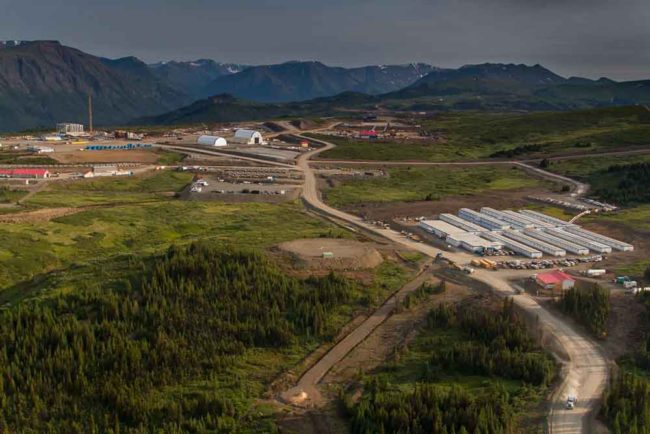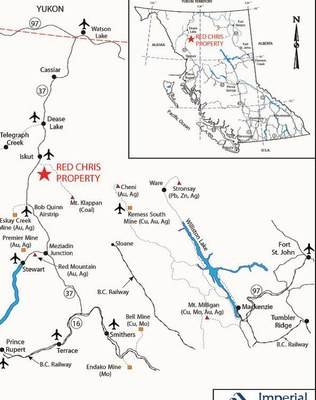
A new copper and gold mine in Southeast Alaska’s Stikine River watershed is a significant step closer to opening. The news comes in the wake of a report saying another mine owned by the same company designed its dam poorly, which led to its collapse.

British Columbia’s Ministry of Mines has issued an interim permit allowing the Red Chris Mine to begin testing its mill and filling its tailings pond.
The mine, owned by Vancouver-based Imperial Metals, is about 120 miles northeast of Petersburg. It’s on the Iskut River, a tributary of the Stikine, a salmon-rich waterway that enters the ocean near Petersburg and Wrangell.
Officials at Imperial Metals’ Vancouver, B.C., headquarters did not return requests for information or comment. In fact, they have not returned any of our calls during the past eight months. But a Feb. 2 letter from the mines ministry details what its interim permit allows.
Spokesman David Haslam said the mill, where ore is processed, can only test its equipment, not begin full operation. It says the tailings pond can only be partially filled. And it requires a response plan, in case the dam leaks or breaks.
Critics on both sides of the border say a failure would damage the Stikine River.
The testing and filling come as supporters and critics digest a report on last year’s mine tailings-dam failure at Mount Polley, another Imperial Metals mine in eastern B.C.
“If we’re going to ensure these future failures don’t occur, the panel recognizes that we can’t continue business as usual,” said Steven Vick, a Colorado geotechnical engineer and a member of a panel that released the Mount Polley report.
He spoke at a press conference addressing that report, which said poor design led to the Aug. 4 collapse.
“It’s not enough to just tweak around the edges of what we’ve been doing and say we promise to do better in the future,” he said.
Southeast Alaska Conservation Council Mining Program Manager Guy Archibald is among Alaskans concerned about the new mine.
“The initial inspection of the Red Chris Dam after the Mount Polley disaster showed that it had a real high rate of leakage,” he said.
Red Chris plans to eventually build five dams to handle waste rock and water over the 30-year life of its open-pit mine.
“And the company maintained that if they were allowed to fill it, the fine particles in those tailings would block those leaks. But they did not offer any supporting data that that would be true,” Archibald said.
It’s the same concern critics have about a half-dozen or more projects planned for the region.
“They all are large, acid-generating mines that are going to produce billions of tons of toxic tailings,” said Rivers Without Borders’ Chris Zimmer.
The acid is created when waste rock reacts with water. That releases dissolved lead, selenium, cadmium and barium, which can also hurt fish. So can copper.
“And the big question all along, and it’s again been raised by Mount Polley, is how do we know those tailings dams are going to be able to contain that toxic waste, that it’s not going to leak out, and it’s not going to pollute our rivers and affect our resources,” he said.
The mines ministry says Red Chris mill tests will use rock that does not generate acid. In full operation, it will.
The mine has been extracting and stockpiling ore for a number of months. The interim permit lasts through May. Mine officials have said they hope to get their final permit and begin full operations by then.
The permit was issued as British Columbia doubled the budget for its mining agency.
Premiere Christy Clark told a recent Vancouver industry gathering that the money would help speed development.
“We’re going to make sure that we’re increasing resources so that we have more boots on the group, performing more inspections, making sure you get what you need. But also making sure, in light of what’s happened at Mount Polley, that we all recognize our greater responsibility to work together and ensure that mining is done safely,” she said.
The Red Chris Mine was supposed to open last year. But after the Mount Polley disaster, its owners agreed to wait for further examination of its tailings-pond dam.
That was done in conjunction with the Tahltan Central Council, the tribal government for the area. Their report raised serious concerns about the dam’s safety and made more than 20 recommendations for improvements.
The council did not return requests for comment. But B.C.’s mining ministry says Tahltan leaders support the temporary permit and will continue to consult on final approval.
